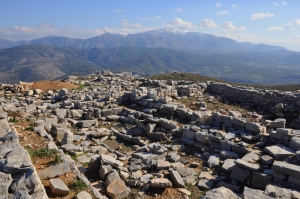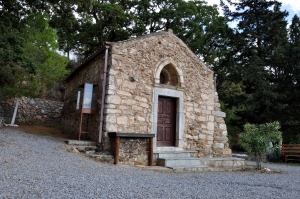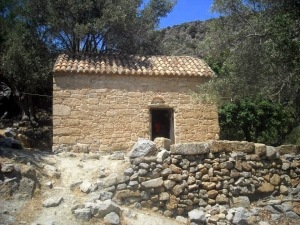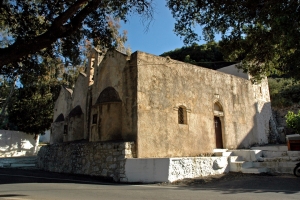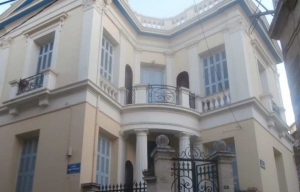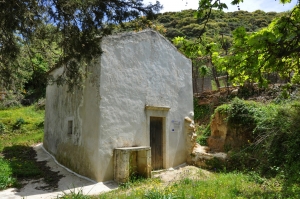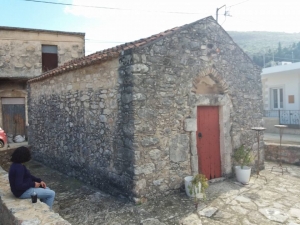At the top of the rocky hill of the Prophet Elijah (Profitis Ilias) near Smari, at an altitude of 590m, there are the ruins of a citadel with a strong defensive wall. The place has panoramic views across the fertile planes of Kasteli and Smari. According to the archaeologist Hadjivallianou, the citadel was the actual site of ancient Lyttos mentioned by Homer. The city was inhabited from 1800 BC till 630 BC, before being abandoned by its inhabitants.
Near Diavaide there is the church of St. George Sfakiotis, bearing frescoes of the 14th century (there is an inscription of 1390). One of the frescoes represents St. George and St. Demetrius on horseback crossing the sea with octopuses, crabs, eels, and lobsters below their legs.
Saint Kirikos or Kirkos is located at the archaeological site of Lissos, on the site of a former Early Christian Basilica and gives its name to the entire valley of Lissos. The vaulted church has Byzantine frescoes, unfortunately damaged.
The settlement of St. John the Evangelist, whose core was the former monastic complex of the monastery of St. John, is situated between the villages Kritsa and Kroustas. According to local tradition the monastery was founded in the second Byzantine period and it is known that it functioned until the late 19th century.
This house is one of the most elegant examples of the late 'romantic' Neoclassicism. It was built in the first decade of the 20th century by the architect D. Kyriakou, probably influenced by the bilding of Stathatos at Queen Olga avenue, Athens (architect Ernst Ziller).
On November 3rd, every year, Cretans celebrate St. George Methystis (i.e. St George that makes people drunk). On that day they first open the barrels and taste the new wine made of the grapes that were collected two months ago. Normally Saint George is celebrated on April 23 every year, but because he was always put in a special place in the hearts of the Greeks they gave him the advantage to be honored twice a year.
The very old church of Michael the Archangel is located south of Archanes, bearing frescoes of 1315. A mural depicts the founder of the church holding a model of the church and there are depictions of sinners in hell.
The church of Saint Nicholas (Agios Nikolaos) Maziotis is located in the village of Maza, province of Apokoronas. It is a small single naved arch-roofed temple dating back to the 13th century. Its interior has impressive frescoes by the famous hagiographer of western Crete, Ioannis Pagomenos, who is believed to be buried on the floor of the temple.





